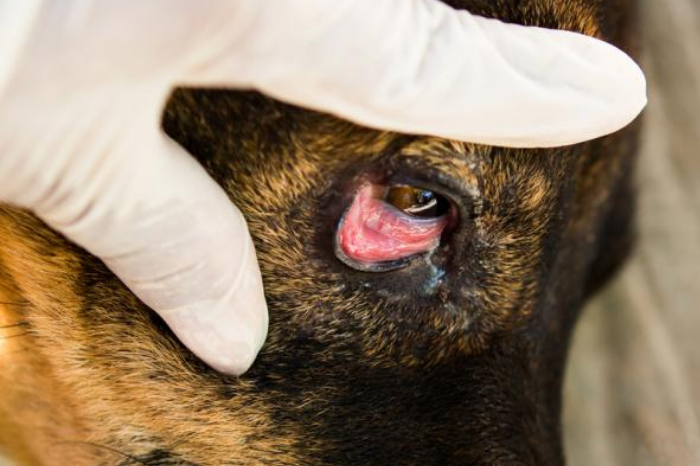

TPLO Technique – the GOLD STANDARD for Cranial Cruciate Ligament Rupture Repair
The pathological condition of CrCL (Cranial Cruciate Ligament) rupture is very common in clinical practice. The cause, in more than 80% of the cases, is a degenerative process of genetic background that gradually affects the cruciate ligament, so the last usually ruptures automatically, without necessarily requiring an external mechanical force or accident to happen.
The stifle (knee joint) is a complex joint and it’s working in 3 different planes, as the flexion-extension movement of the joint is a combination of “rolling” and “gliding”. The CrCL plays an important role in these movements of the knee by counter-acting four main forces which are;
1). translation of the tibia cranially to the femur bone (cranial tibial thrust, see pic)
2). internal rotation of the tibia
3). hyperextension of the stifle joint and
4). knee varus/valgus deviation.
Up to the current moment, there is no “perfect” surgical technique that can compete at once all the forces mentioned above when the CrCL is ruptured. The most effective one though, with the most promising long-term effects for the good health of knee joints, has been proved to be the TPLO technique (Tibial Plateau Leveling Osteotomy).
TPLO aims to restore the biomechanical balance by neutralizing the cranial tibial crust and making the CCL no longer necessary for the knee joint stability. This is achieved after a crescentic osteotomy on the proximal tibia is performed to change the tibial plateau angle to less steep.
Other surgical techniques like TTA (Tibial Tuberosity Advancement), CBLO (Cora-Based Leveling Osteotomy), Lateral suture technique, Tight Rope technique, etc. are also commonly performed by vet surgeons and each of them has its pros and cons, bringing not less often orthopedic vets to debate. Despite all the “opinions”, statistics show that TPLO is daily performed and preferred by the most well-known referral orthopedic veterinary centers worldwide, regardless of the fact it is technically more challenging. It can be performed on both small and large breed pets and gives the benefit of concurrent surgical correction of other anatomic abnormalities of the knee which might be present at the same time, i.e. patella luxation, tibia varus/valgus.
In our clinics, we perform with great success ratio the TPLO technique to our patients, especially large & medium breed dogs. TTA is our second alternative technique, while the Lateral Suture technique is preferred occasionally to smaller patients as a less costly solution.
recent post

EARLY DETECTION AND TREATMENT OF HIP DYSPLASIA IN PUPPIES
Hip Dysplasia in dogs is an anatomical orthopedic condition which has a genetic background and affects mostly..
learn more
“CHERRY EYE” or PROTRUSION OF THE GLAND OF THE 3rd EYELID
Protrusion of the gland of the third eyelid (or “cherry eye”) occurs most commonly in dogs and..
learn more



